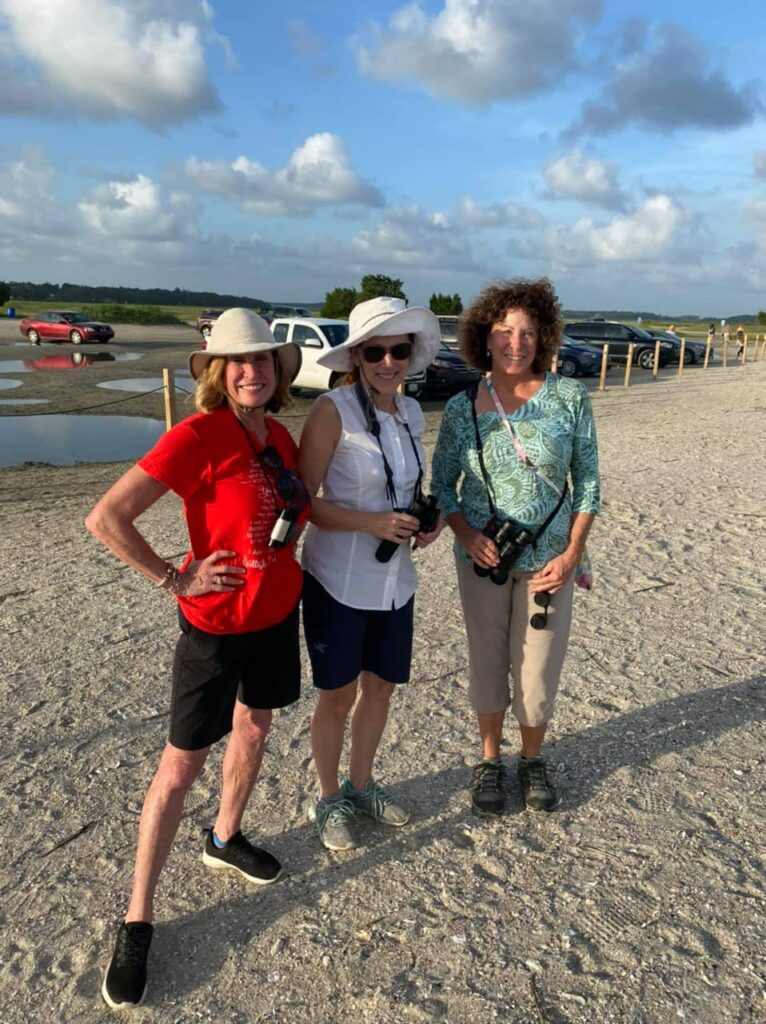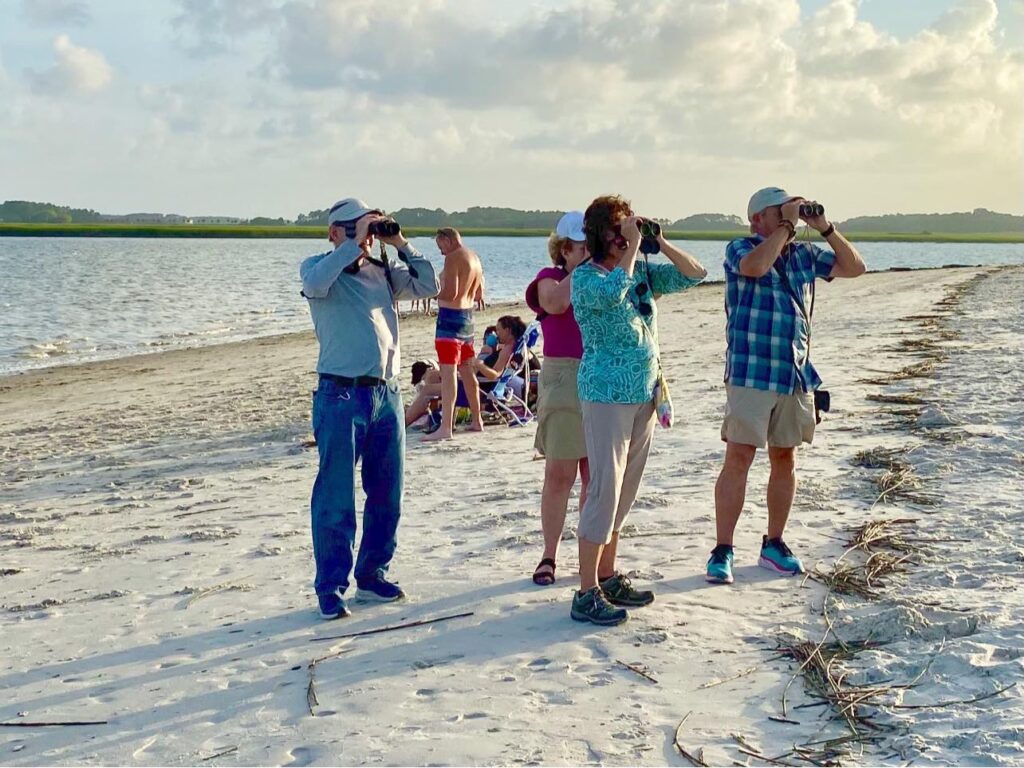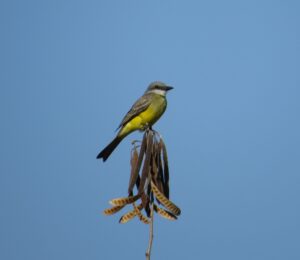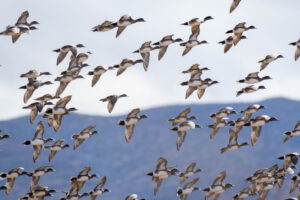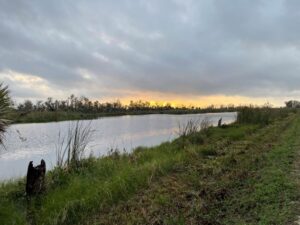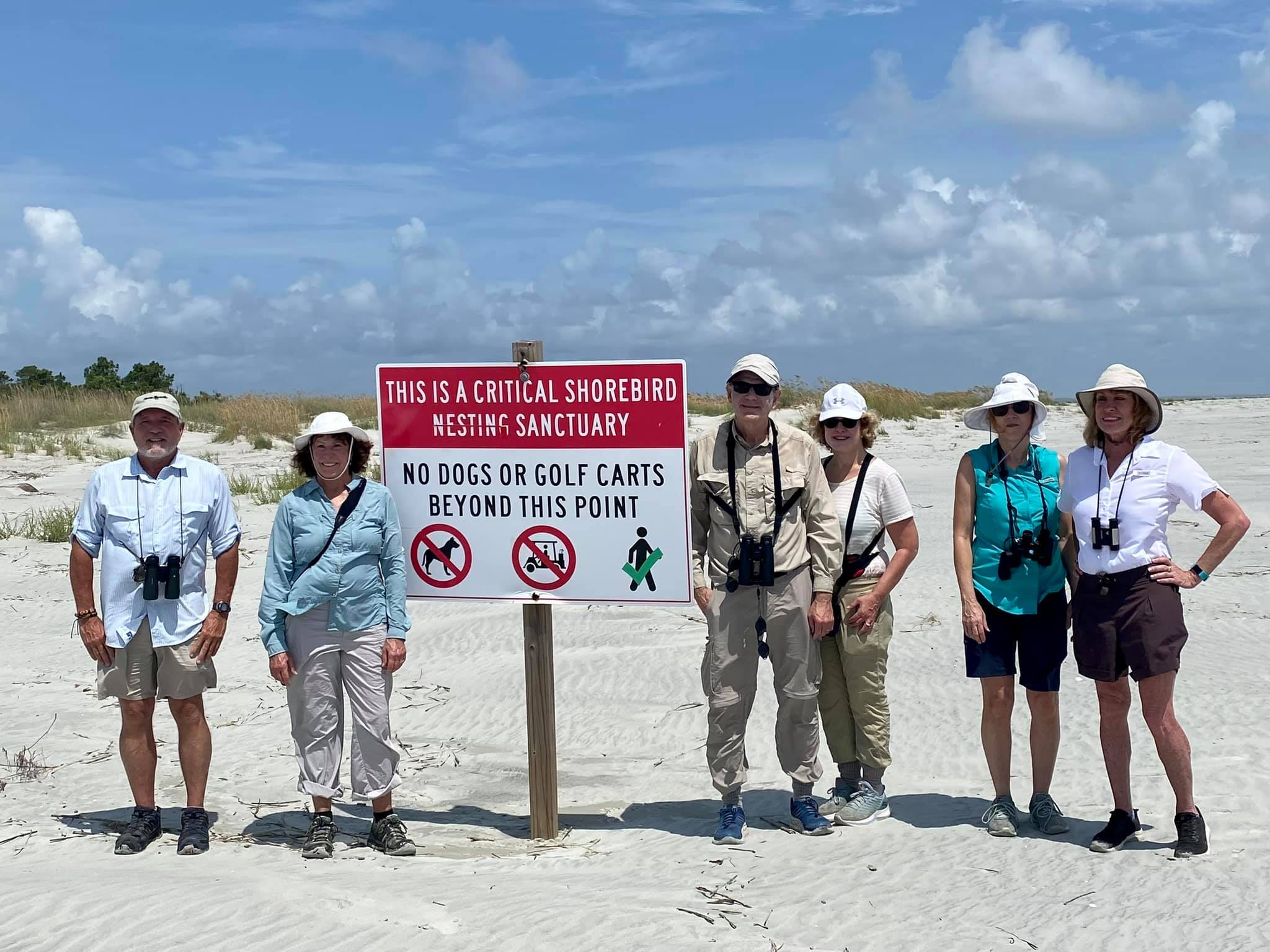
August 26 – 29, 2021
Narrative and Photos by Craig Watson
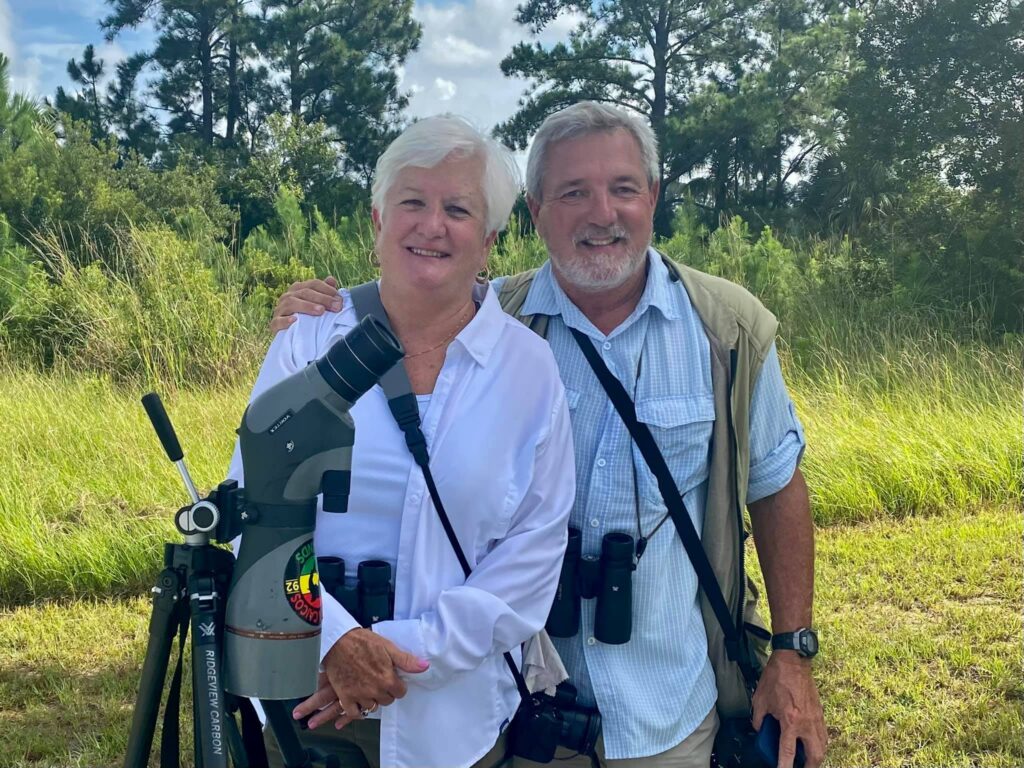
Pam Ford and Craig Watson
Shorebird visitation to coastal South Carolina can be quite spectacular during August as many shorebirds are in full migration and are staging in particular areas for the long departure out of North America.
All of us met at the hotel in Beaufort, South Carolina on Thursday August 26, at 5pm. We grabbed some sandwiches for dinner and proceeded to the Port Royal Boardwalk on the Beaufort River to begin our birding for the weekend.
Without much light left we began birding the shoreline, marshes, and waters of the Beaufort River. While we did not see a lot of species that evening, we did notice hundreds of White Ibis and other herons and egrets flying in to roost for the evening.
We started the next day at Widgeon Point Preserve, a tract on land managed by the Beaufort County Open Land Trust.
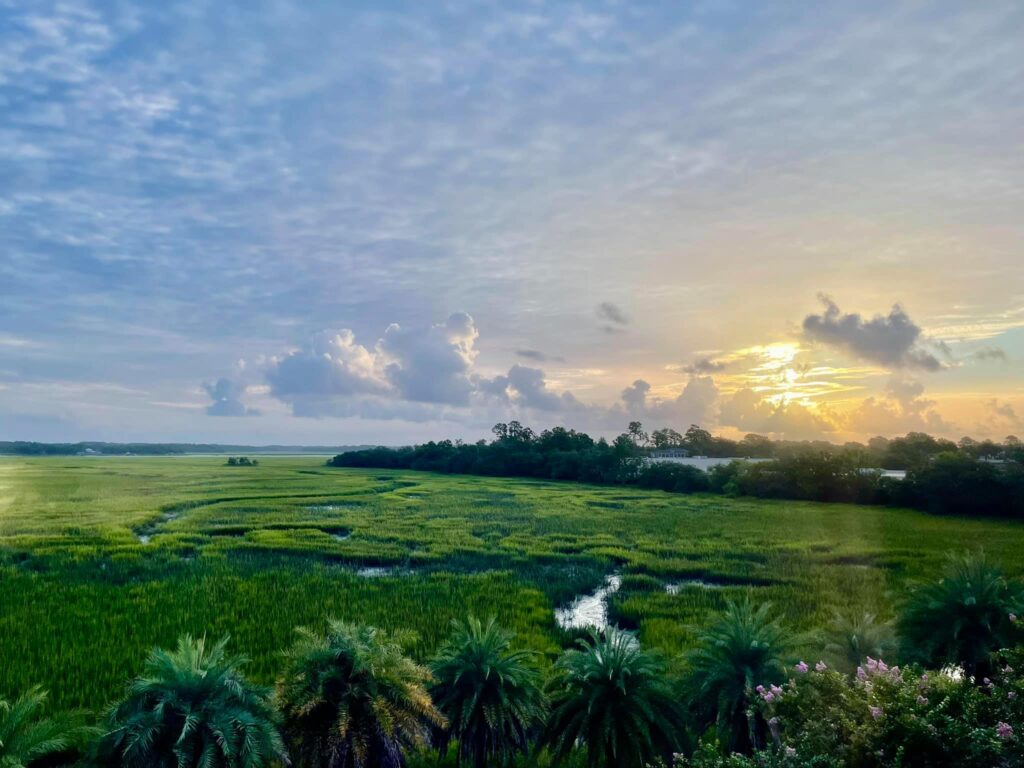
View from our hotel
It is a complex of maritime forest, salt marsh, pine uplands, and salt flats. Highlights here were Roseate Spoonbills and Wood Storks.
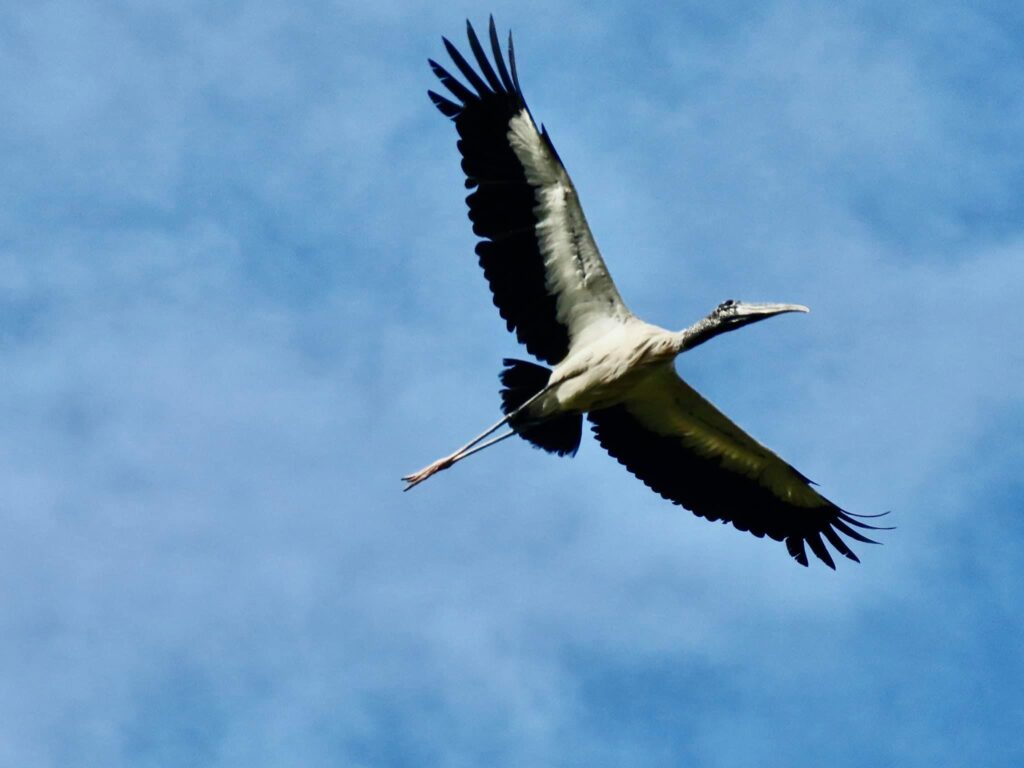
Wood Stork 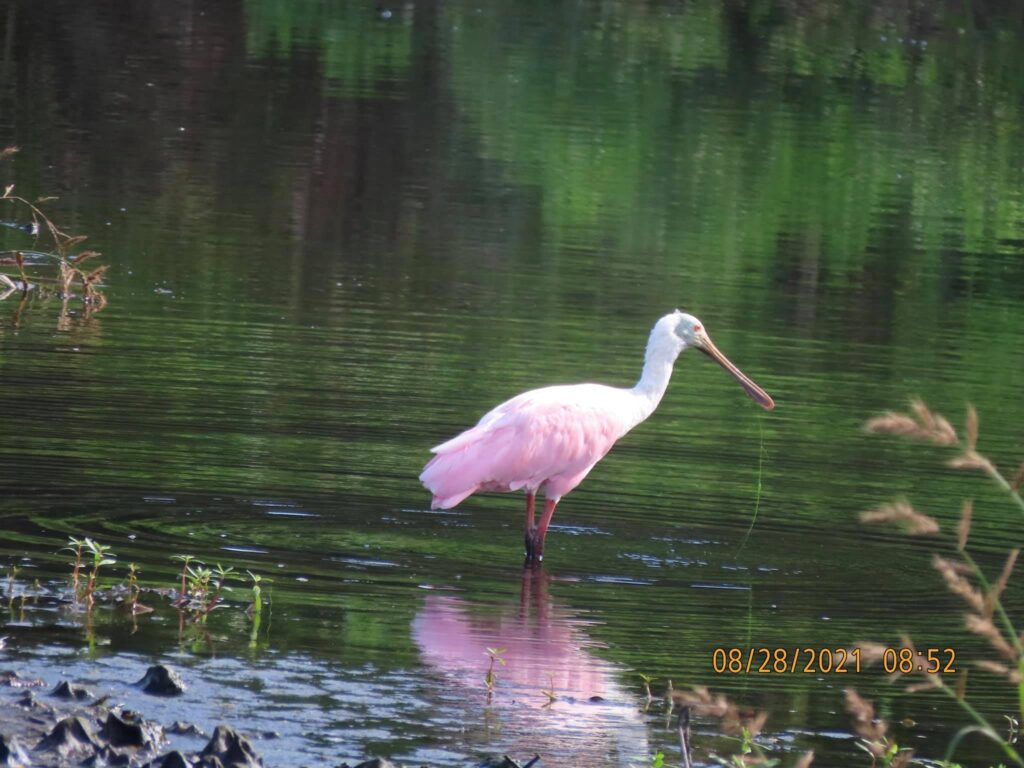
Roseate Spoonbill
We visited this site first to time our next visit for the appropriate tide cycle level at Hunting Island State Park.
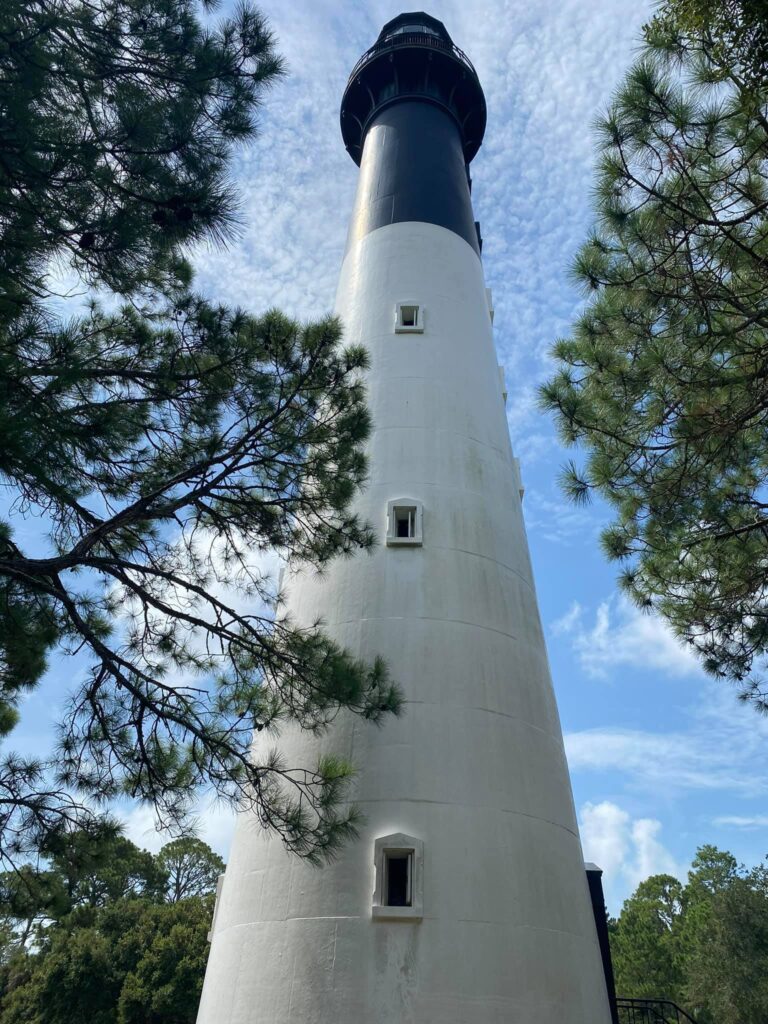
Hunting Island Lighthouse 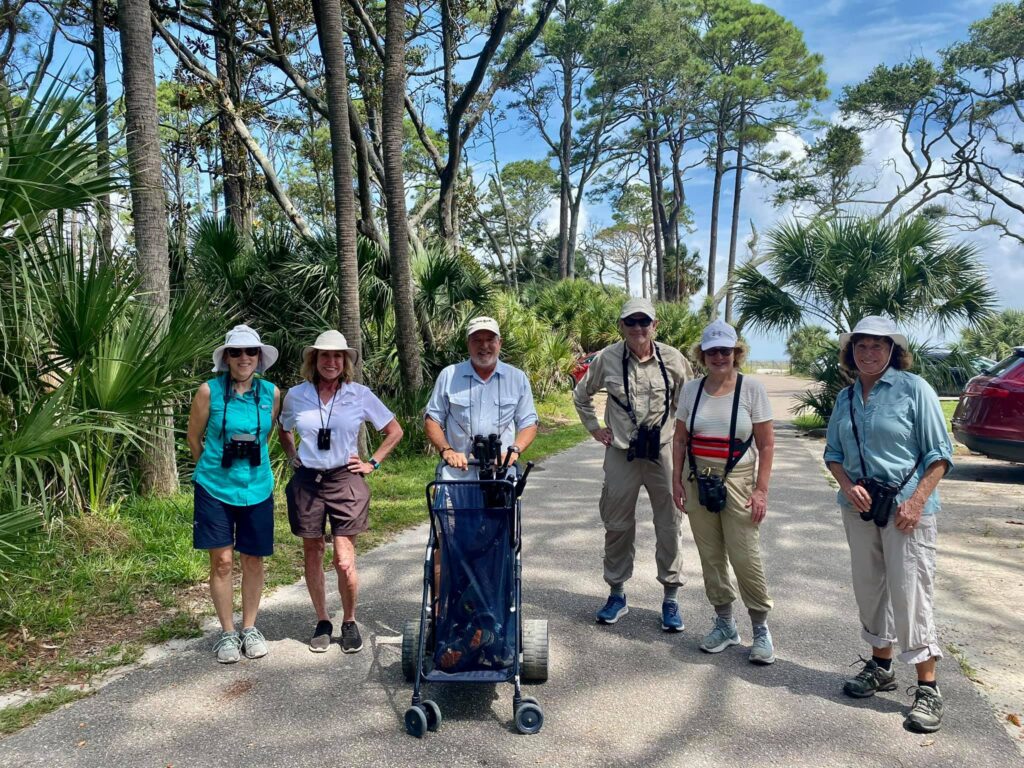
At Hunting Island State Park
Visitation is best at high tide as thousands of shorebirds and seabirds roost, loaf, and forage on the north end of the island on the vast sand flats. We recorded 41 species here with the highlights being approximately 3500 shorebirds and seabirds. Thirteen species of shorebirds were seen here, with high numbers of Semipalmated Plovers and Semipalmated Sandpipers. Twenty Piping Plovers were observed, as well at 13 Wilson’s Plovers, the local nesting plover here.
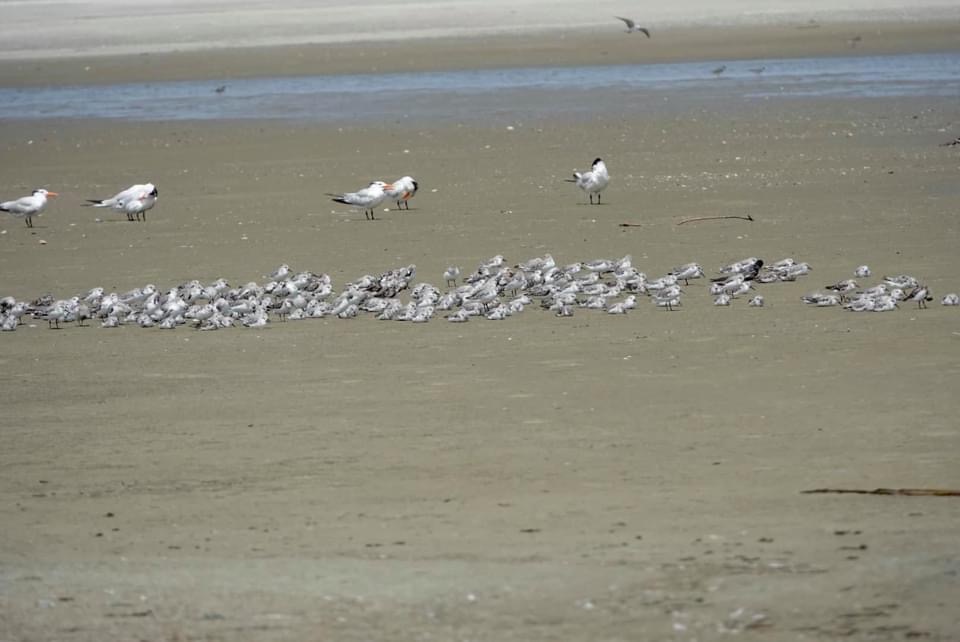
Lots of Semipalmated Sandpipers and some Sanderlings
Large numbers of Marbled Godwit and Sanderling were also observed. Seven species of tern were observed, including a high count for Black Tern at 130.
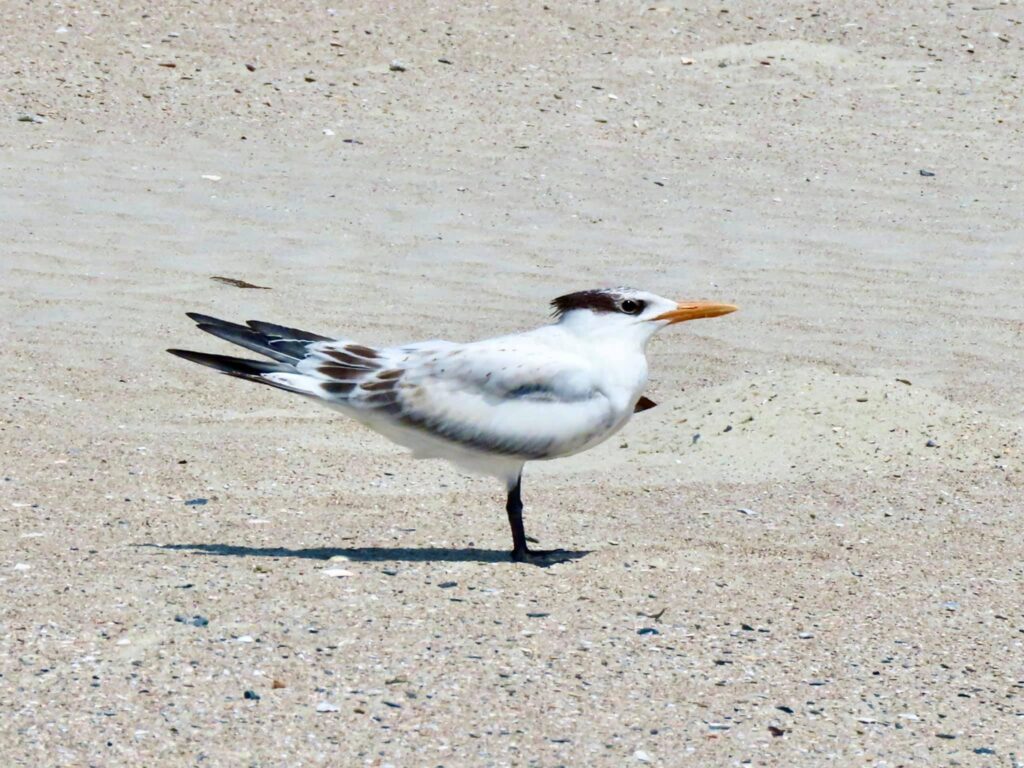
Royal Tern
Other terns were Least, Caspian, Royal, Sandwich, Common, and Black Skimmer.
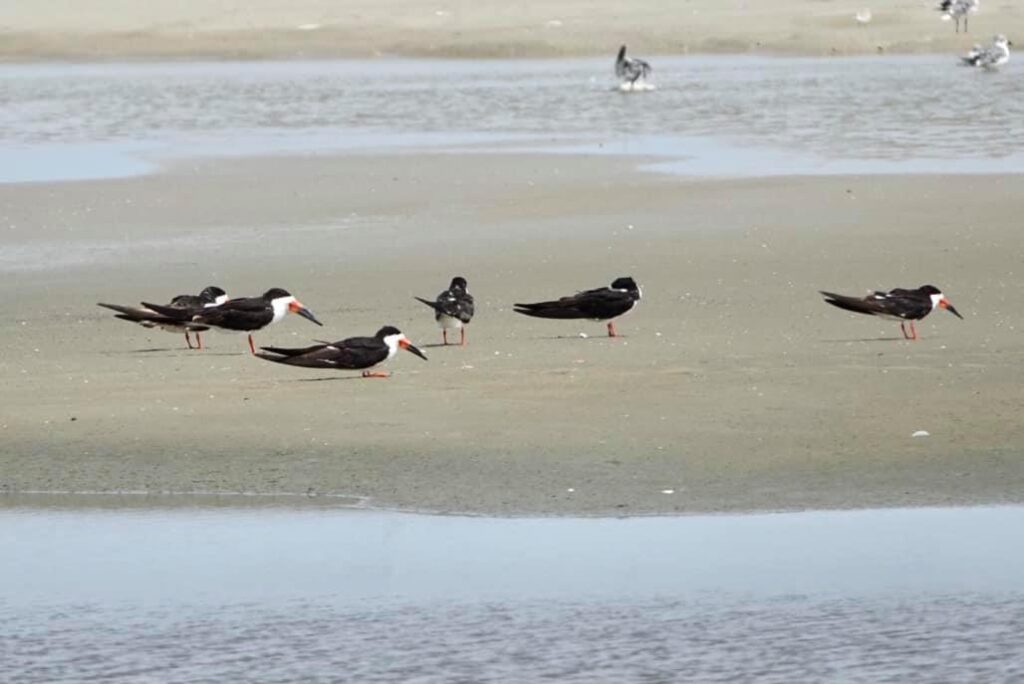
Black Skimmers
Other highlights here were an immature Reddish Egret, a Whimbrel, Black–bellied Plovers in full breeding plumage, and simply the large unidentified numbers of shorebirds and seabirds that were too far away to identify. It was truly a sea of birds. Temperatures hovered around 100 degrees (very unusual for this time of year) and there was little breeze, and with a 3 mile round trip walk, we ventured back to the park for lunch.
After lunch, we made our way over to Harbor Island, a gated community where we met with Peggy Lucas. Peggy secured our entrance, and she is the local shorebird steward and turtle volunteer who coordinates much of the environmental and conservation programs on the island.
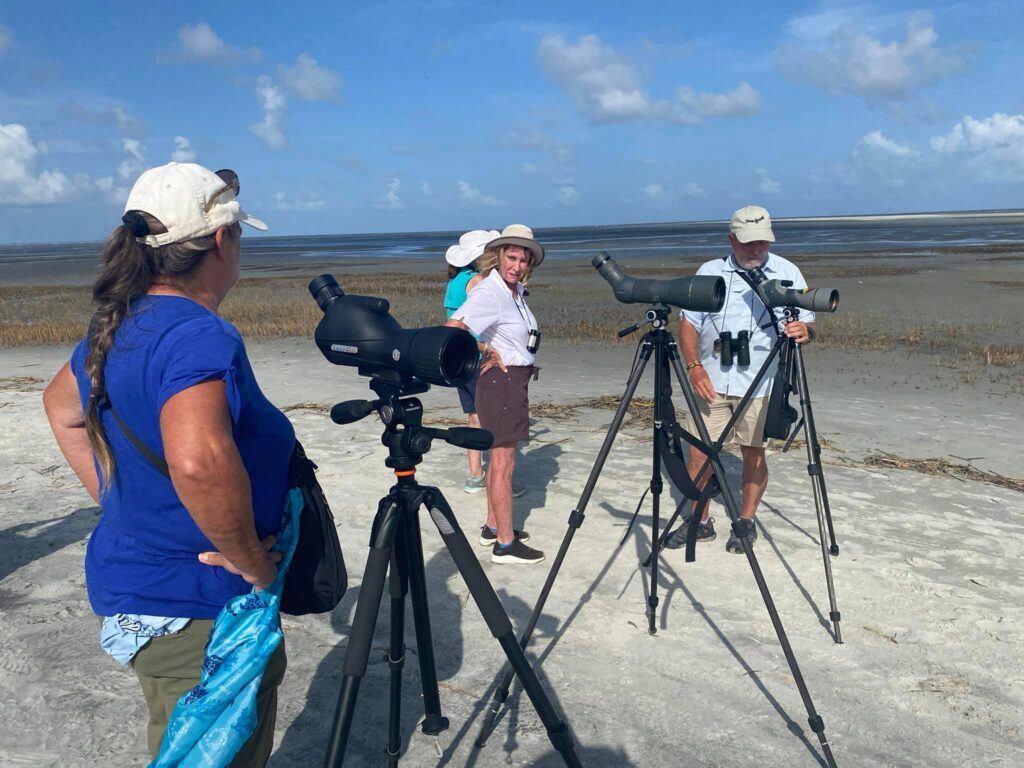
With Peggy Lucas at Harbor Island
Harbor Island has extensive sand flats such as the adjacent flats of Hunting Island, but birds observed here can not be seen from the Hunting Island flats, and Harbor has an extensive relict marsh habitat that attracts many shorebirds for foraging upon the great invertebrate resource found in the relict marsh. Many of the species were the same here, with more Marbled Godwits, Piping Plovers, Ruddy Turnstones, Least Sandpipers, and Pectoral Sandpipers, a species that has not been recorded here previously. A real highlight was finding a Sanderling flagged with a yellow flag above the left knee. This has submitted to bandedbirds.org, and in researching this, Sanderlings have been flagged in both Peru and Mexico with yellow flags. Additionally, a biologist who works in South America is researching this flagged Sanderling, and there has been a response report from BandedBirds. This brought our shorebird species total to 16 species.
Having spent a few hours here, we went to dinner at the Foolish Frog, a local seafood restaurant with outdoor seating overlooking the marsh where we eerily enjoyed Fish Crows and Black Vultures calling and roosting.
The next day, Saturday, we checked out of the hotel in Beaufort and proceeded to Donnelley Wildlife Management Area about 30 minutes north. Donnelley WMA is a premier birding hotspot in the South Carolina lowcountry.
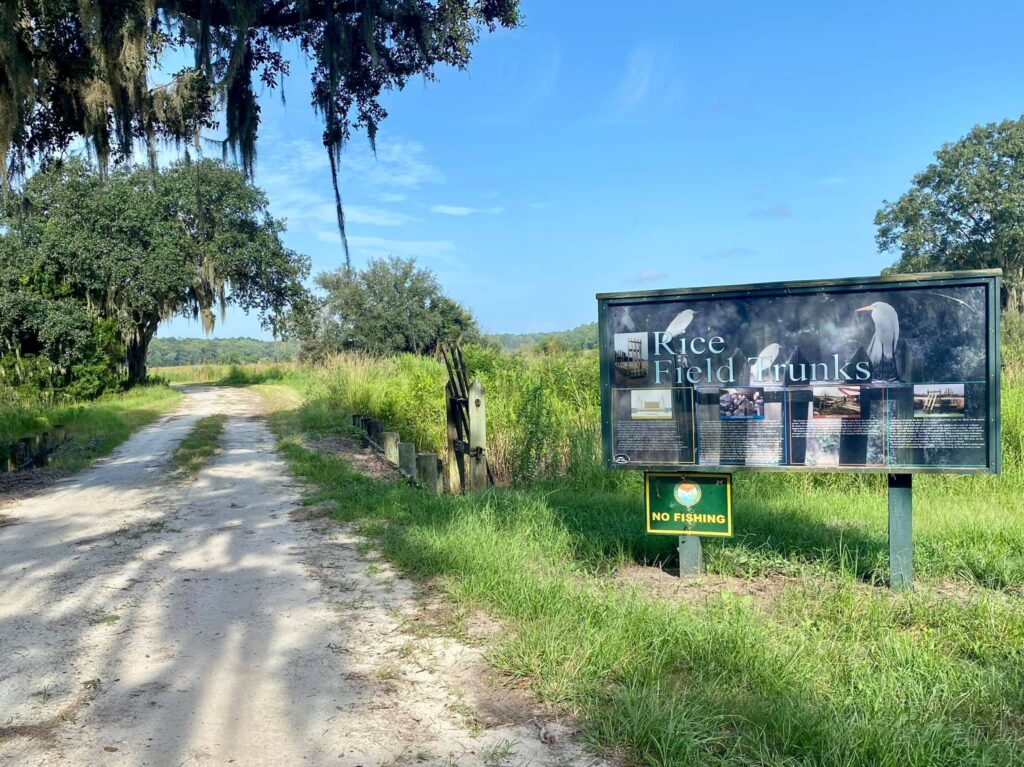
Donnelly Wildlife Management Area
As our final destination of the day was Kiawah Island, we did a quick drive through at Donnelley and found it to be very productive. Roseate Spoonbills flew directly over us and low several times, very spectacular in the morning light.
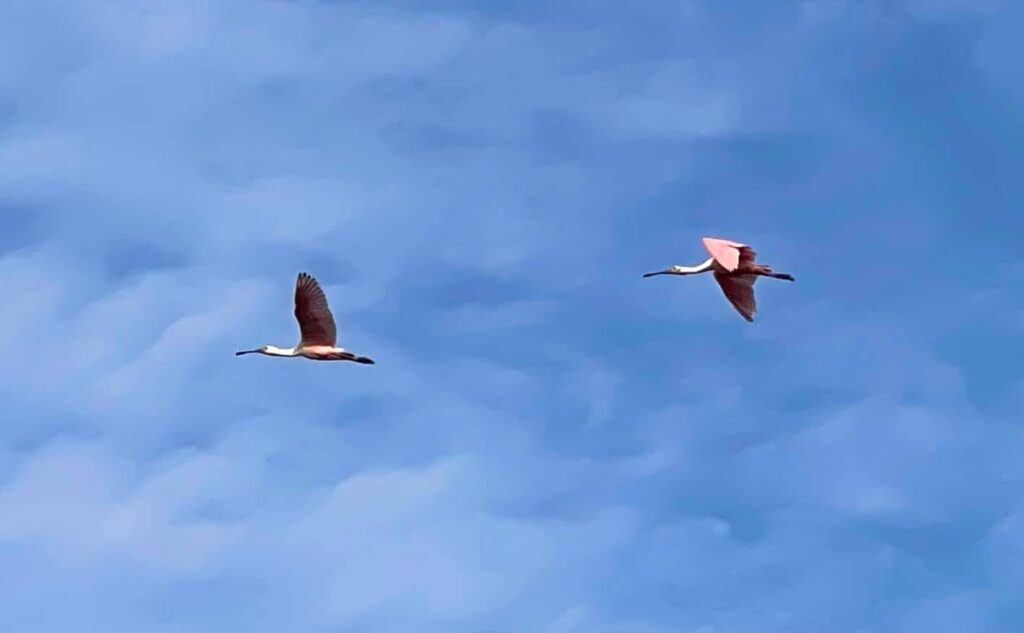
Roseate Spoonbills
Our quick trip tallied 49 species with a huge number of Black-bellied Whistling Ducks (75). Two additional species of shorebirds were observed here, Greater and Lesser Yellowlegs, bringing our total to 18 species of shorebirds. Other highlights here included good close looks at Gull-billed Terns and Glossy Ibis, and couple of Least Bitterns made brief appearances.
Driving on to our next destination, Kiawah Island (another gated island community, access granted by another shorebirds steward), we had an outdoor lunch at Freshfield’s outside of Kiawah.
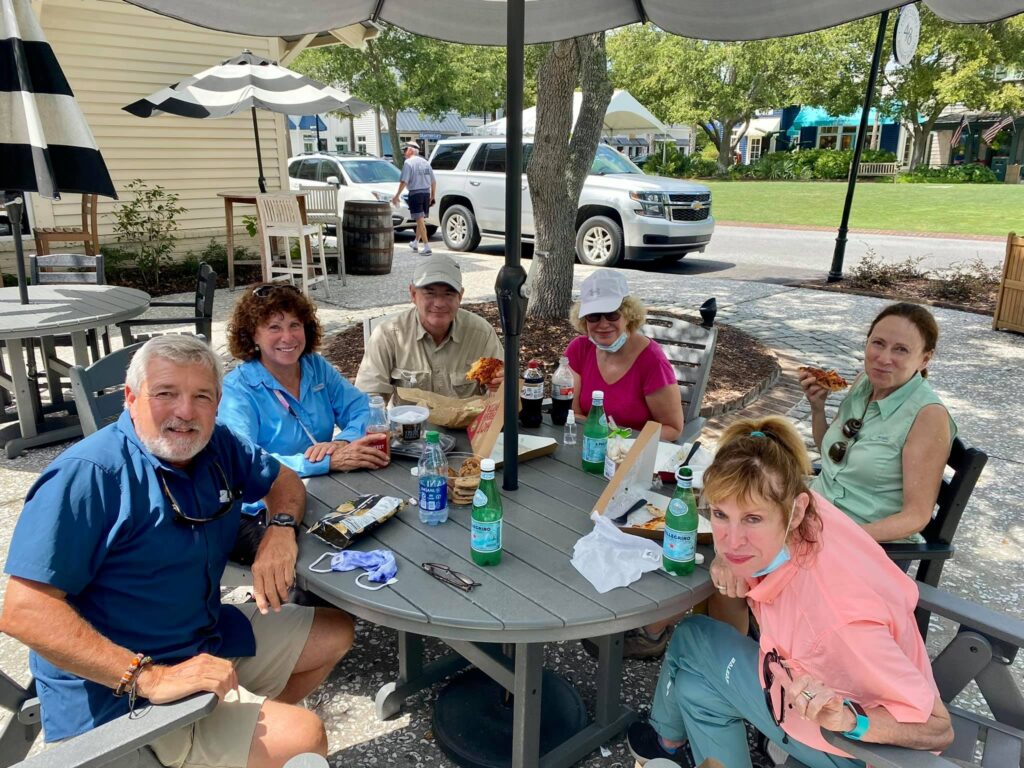
Outdoor Lunch
We then proceeded to the Ocean Course golf course on Kiawah Island (famous for PGA Tournaments).
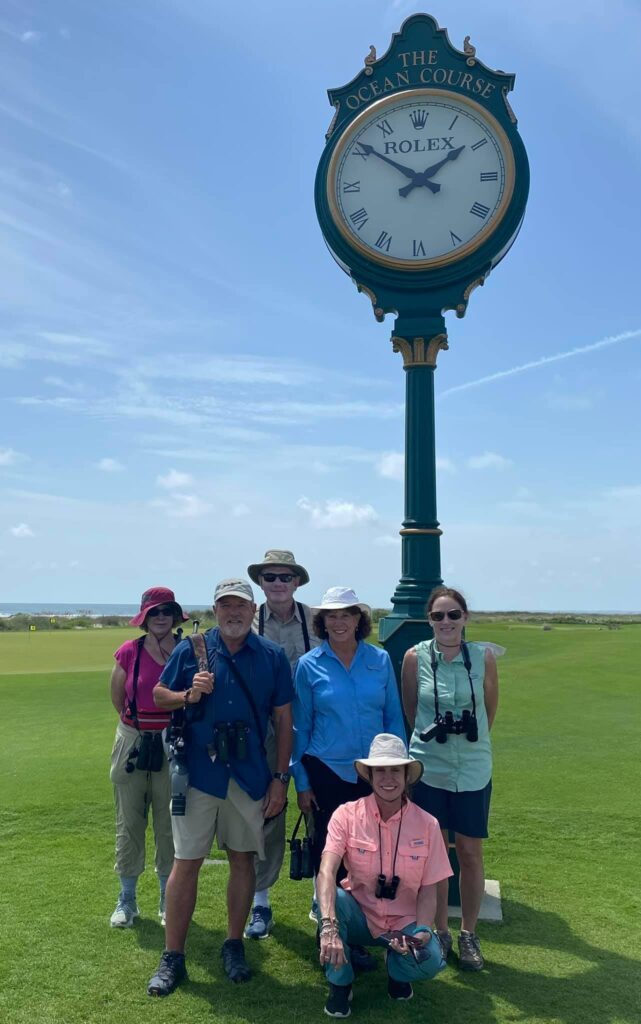
Our group at Ocean Course 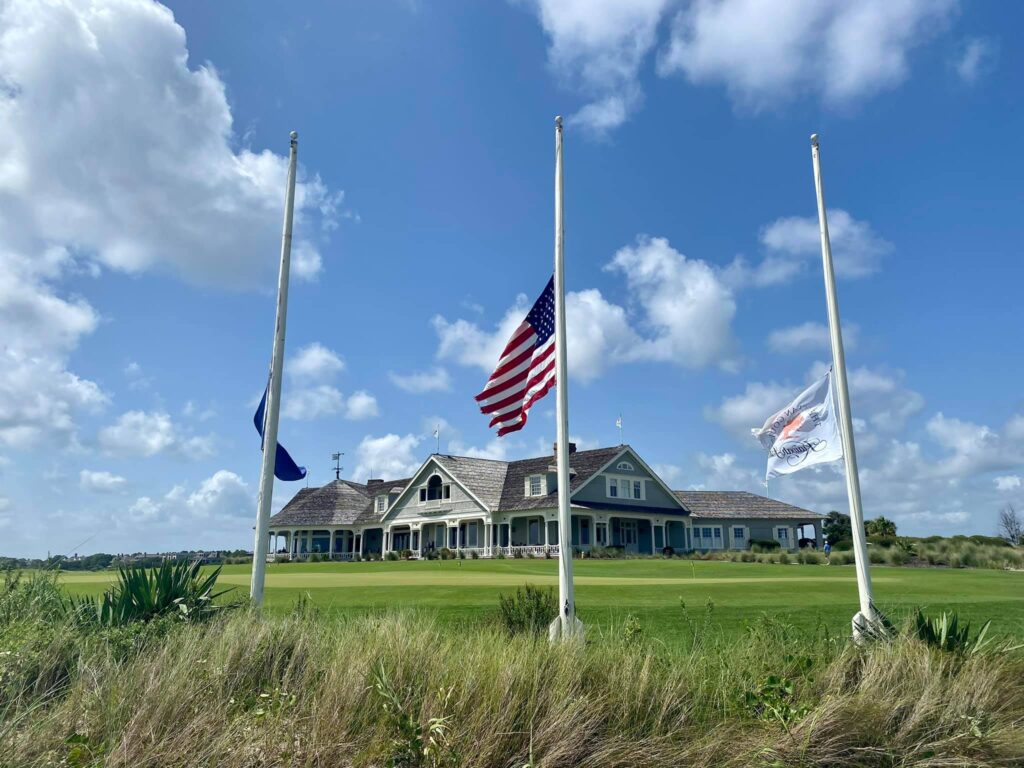
Half Mast at Ocean Course
The large tidal pool near the clubhouse of the Ocean course was our destination, but we observed birds on the drive to the tidal pool, and in the dunes and the ocean. This particular tidal pool is large and provides a great resting place for migrating shorebirds and seabirds and attracts rare birds when they pass through the area. Eleven species of shorebirds were observed here, with a total of 32 species observed, mostly shorebirds, seabirds, and wading birds.
We then proceeded out of the gated section of Kiawah Island to a public area, Mingo Point. This is a great place for migrant passerines, as well as other landbirds.
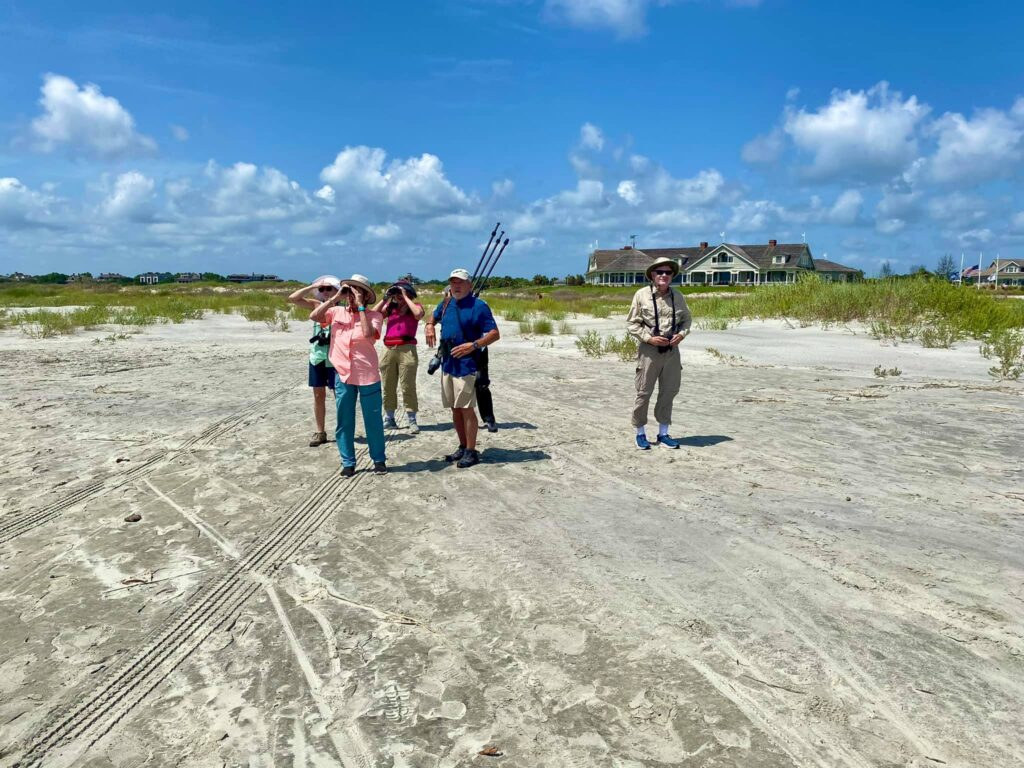
Birding on Kiawah Island
We had a total of 25 species in this small area, including Painted Buntings, Red-eyed Vireos, and close up views of an immature Yellow-crowned Night Heron.
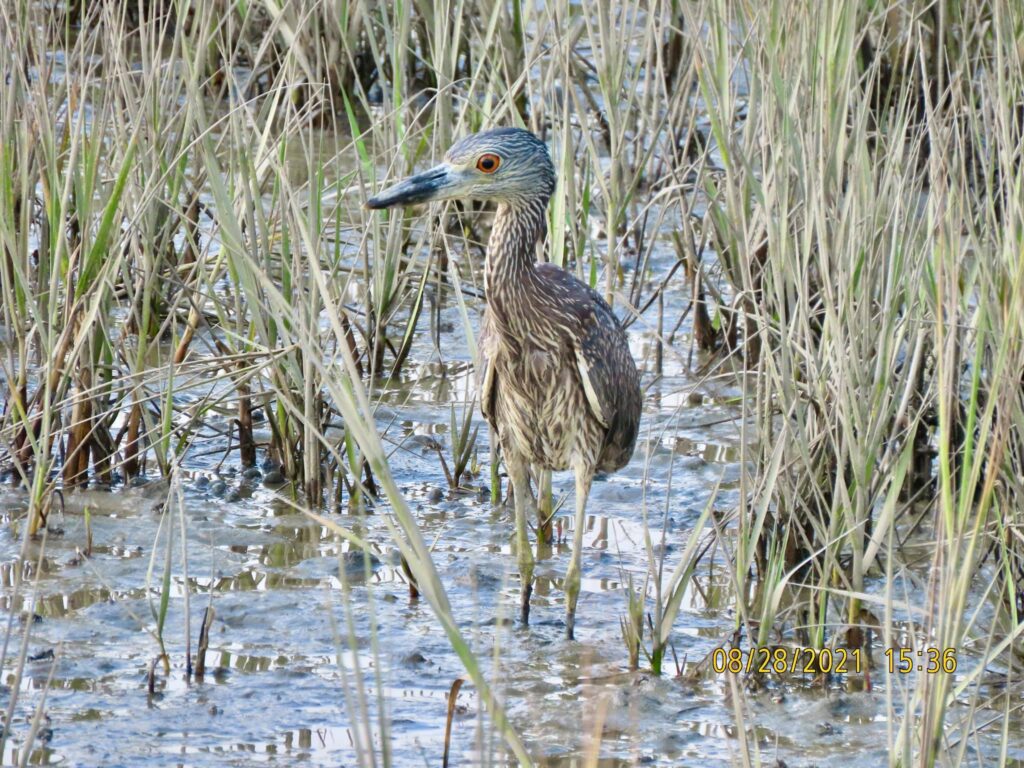
Immature Yellow-crowned Night Heron
Next we moved on to dine at Sewee Restaurant, another local seafood restaurant in Awendaw, some of the best fresh seafood one will find in this area.
The final day we made our way to Santee Coastal Reserve, a state wildlife management area consisting of 24,000 acres of forest, marsh, and managed wetlands.
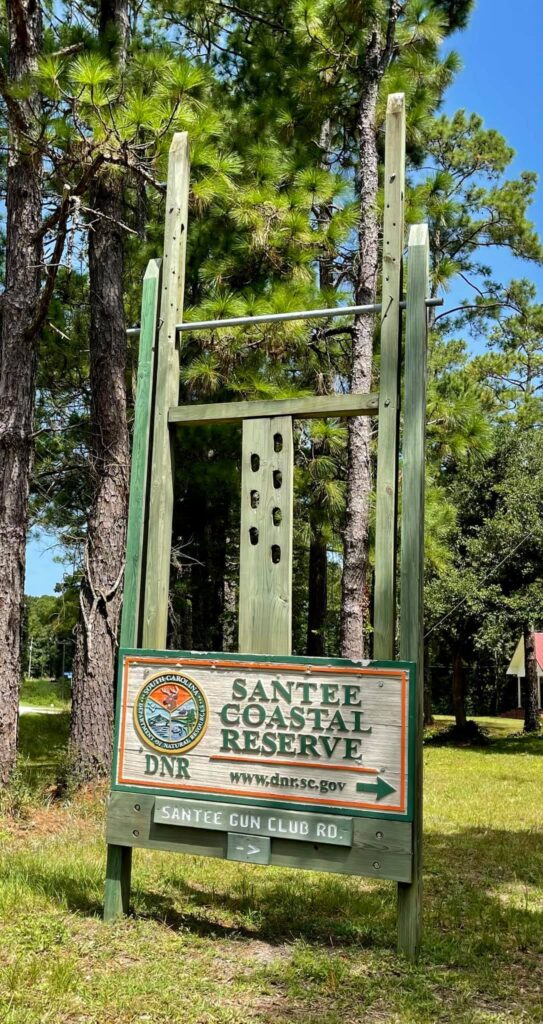
Santee Coastal Reserve 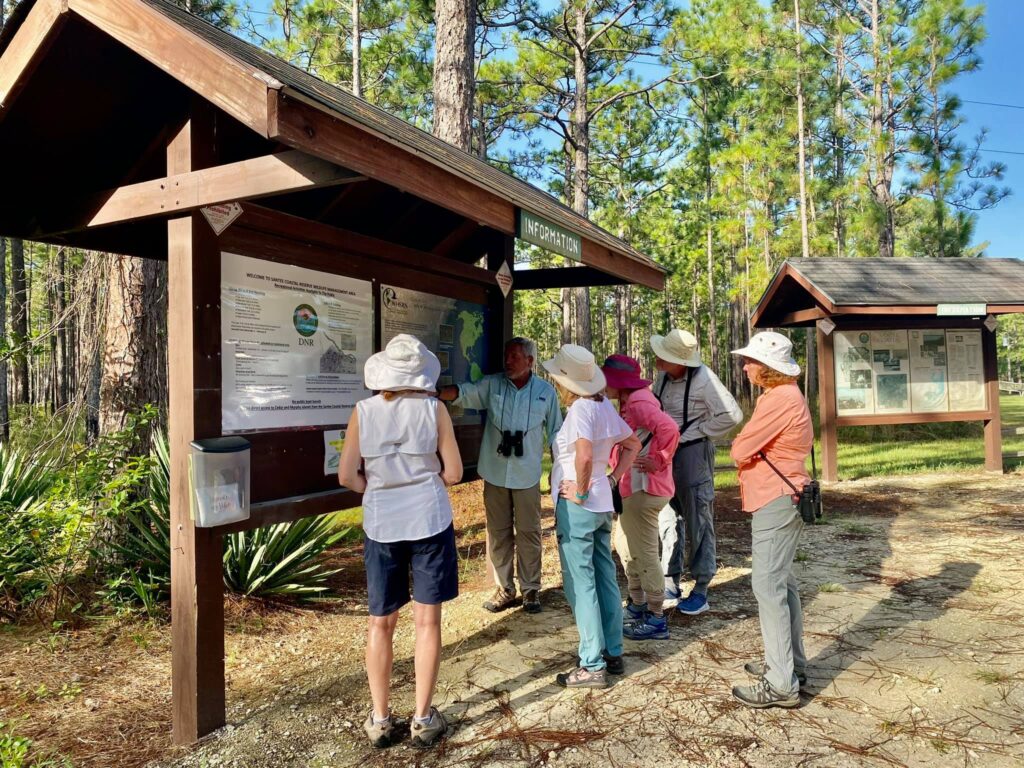
Santee Coastal Reserve
The entrance road produced a good number of Red-cockaded Woodpeckers and other open pine specialty birds such as Brown-headed Nuthatch, Eastern Bluebird, Summer Tanager, and Blue Grosbeak.
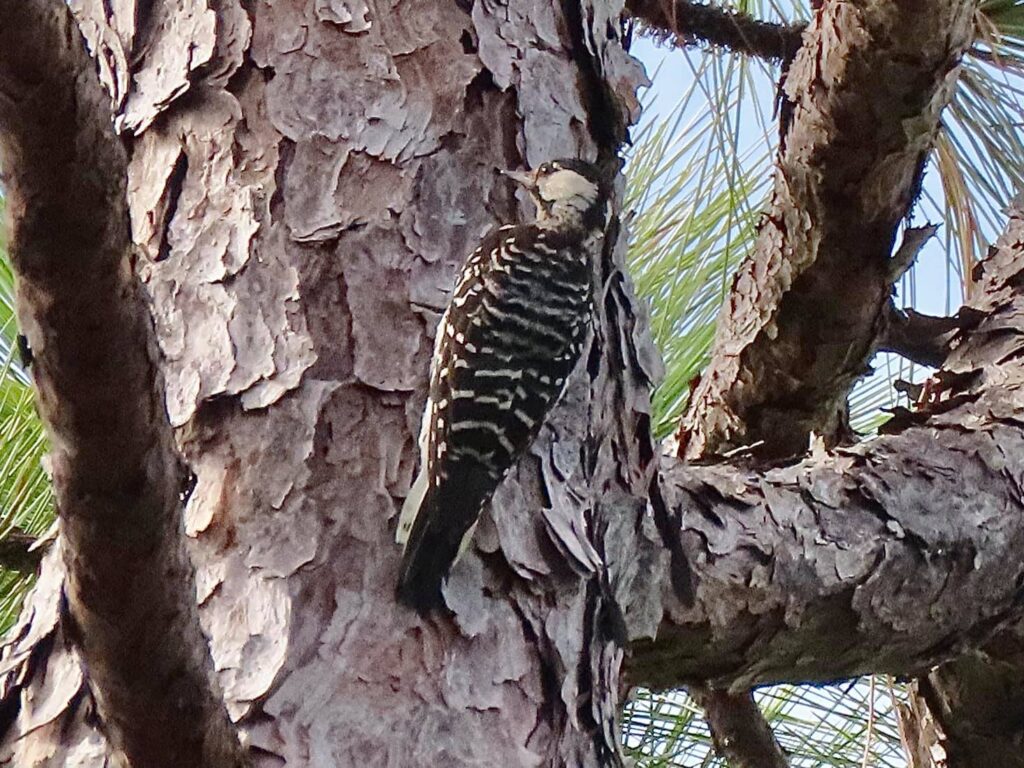
Red-cockaded Woodpecker
One section of this area is specifically managed for shorebirds, and visiting this area we found few shorebirds, but many Wood Storks, Snowy Egrets, Little Blue Herons and Tricolored Herons.
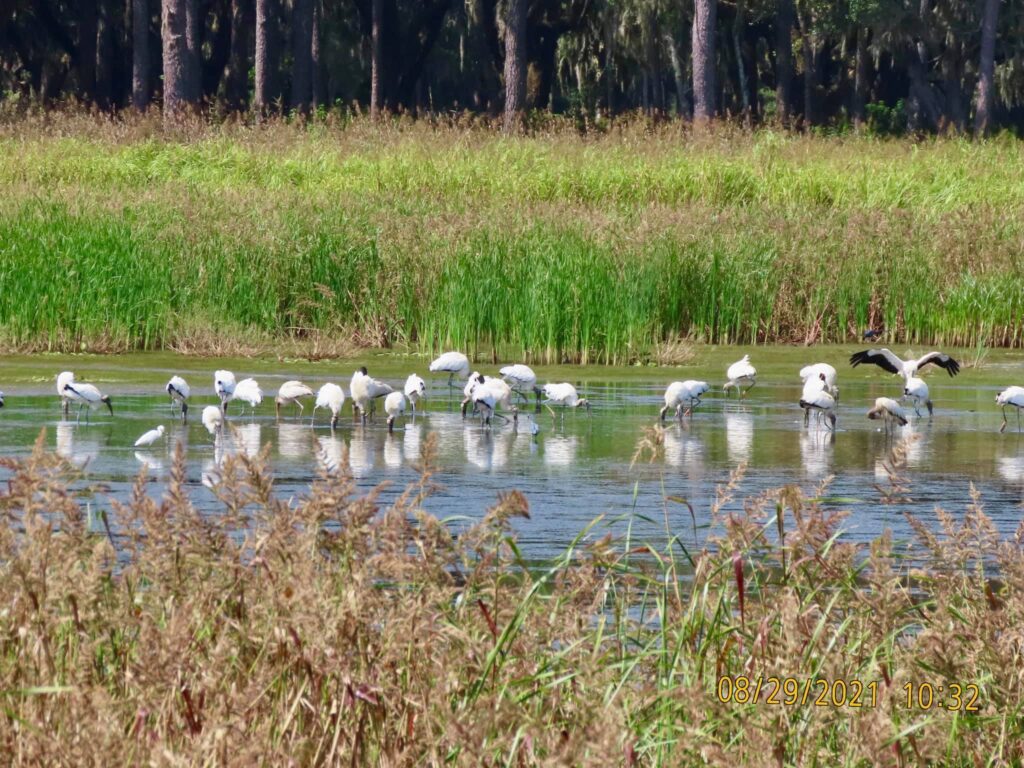
Waders at Santee Coastal Reserve
Five species of woodpeckers were recorded and a few Bobolinks flew overhead while watching the Wood Storks descend into the wetlands.
It was bittersweet to end the tour, as we had all become friends and experienced what few realize is at their doorstep: a wonderful world of birds and beauty.
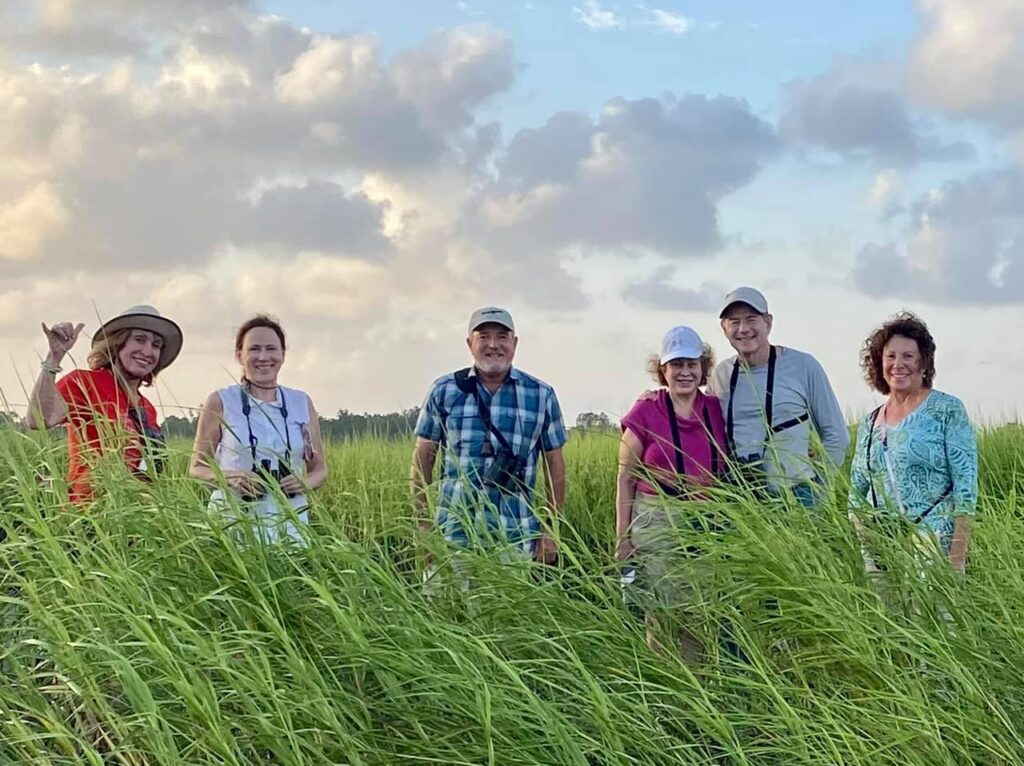
Our group
Despite the overbearing heat and flooded conditions in many of the areas I had hoped to take the group, the adjustments to the locations visited turned out to be great. It is difficult to say what the favorite moment was or favorite bird was, but the sunlight shining through the pink feathers of a Roseate Spoonbill as it flies over your head is pretty special.
We had a total of 9 eBird checklists and observed a total of 102 species, 5 of which were not species specific (eg. tern sp., shorebird sp., etc.) but we had a total of 97 solid species. Our focus was to be on shorebirds and seabirds, and we observed 18 species of shorebirds, 11 species of terns and gulls, 18 species of herons and egrets (including pelicans, cormorants, gallinules and rails), and approximately 40 species of forest and open habitat birds.
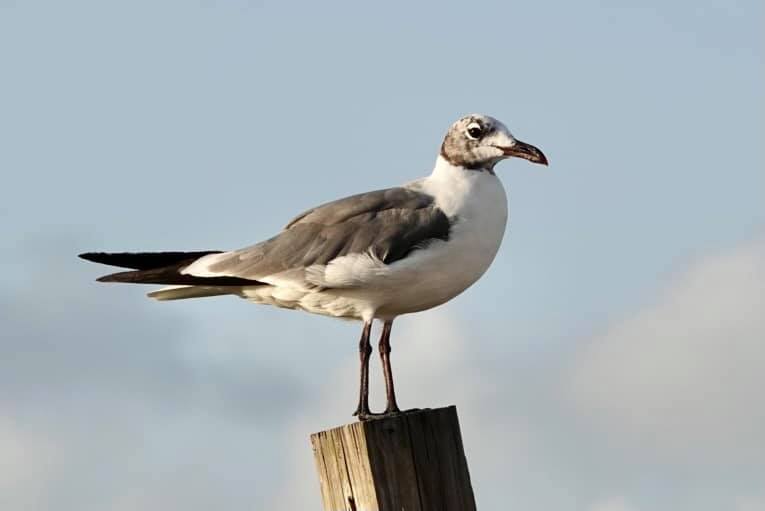
Laughing Gull 
Armadillo 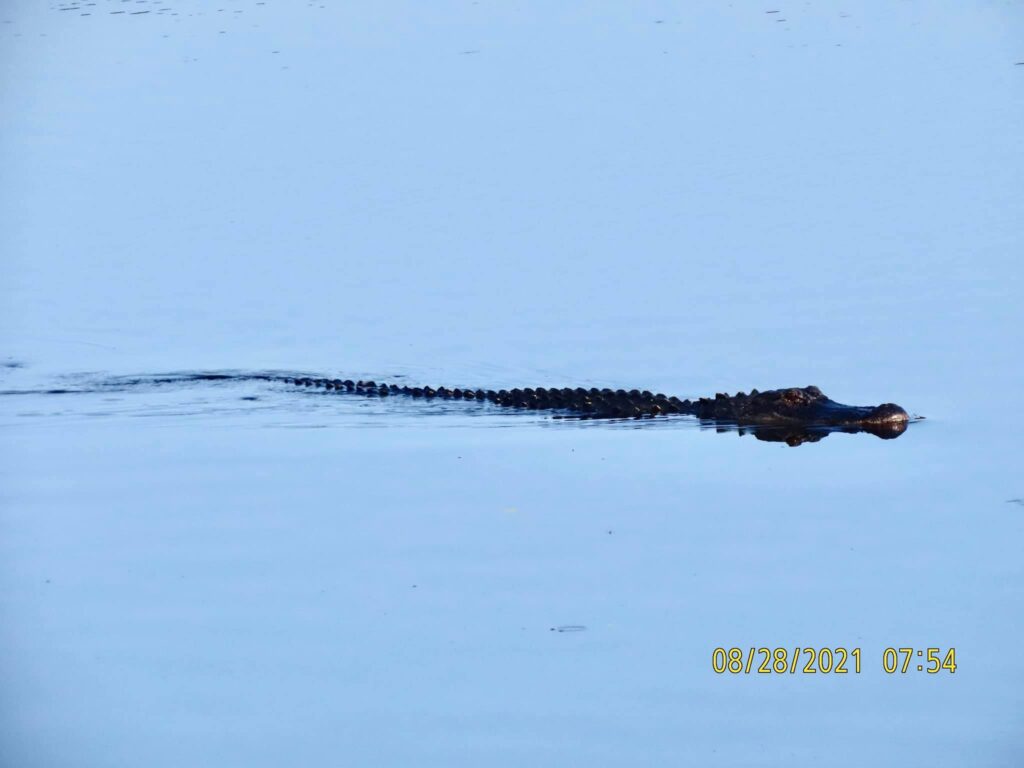
Alligator
